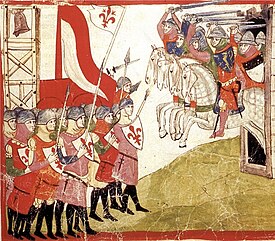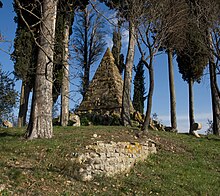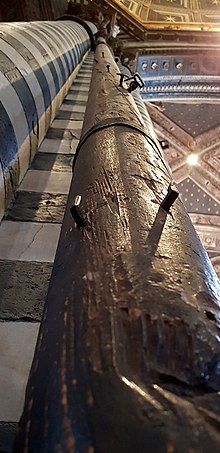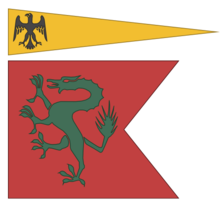
Dante Alighieri, most likely baptized Durante di Alighiero degli Alighieri and often referred to as Dante, was an Italian poet, writer and philosopher. His Divine Comedy, originally called Comedìa and later christened Divina by Giovanni Boccaccio, is widely considered one of the most important poems of the Middle Ages and the greatest literary work in the Italian language.

The Guelphs and Ghibellines were factions supporting respectively the Pope and the Holy Roman Emperor in the Italian city-states of Central Italy and Northern Italy during medieval time.

Brunetto Latini was an Italian philosopher, scholar, notary, politician and statesman.

The Battle of Campaldino was fought between the Guelphs and Ghibellines on 11 June 1289. Mixed bands of pro-papal Guelf forces of Florence and allies, Pistoia, Lucca, Siena, and Prato, all loosely commanded by the paid condottiero Amerigo di Narbona with his own professional following, met a Ghibelline force from Arezzo including the perhaps reluctant bishop, Guglielmino degli Ubertini, in the plain of Campaldino, which leads from Pratovecchio to Poppi, part of the Tuscan countryside along the upper Arno called the Casentino. One of the combatants on the Guelph side was Dante Alighieri, twenty-four years old at the time.
Cavalcante de' Cavalcanti was a Florentine Epicurean philosopher and father of Guido Cavalcanti, a close friend of Dante Alighieri.

Manente degli Uberti, known as Farinata degli Uberti, was an Italian aristocrat and military leader of the Ghibelline faction in Florence. He was considered to be a heretic by some of his contemporaries, including Dante Alighieri, who mentioned Farinata in his Inferno.

A carroccio was a large four-wheeled wagon bearing the city signs around which the militia of the medieval communes gathered and fought. It was particularly common among the Lombard, Tuscan and, more generally, northern Italian municipalities. Later its use spread even outside Italy. It was the symbol of municipal autonomy. Priests celebrated Mass at the altar before the battle, and the trumpeters beside them encouraged the fighters to the fray.
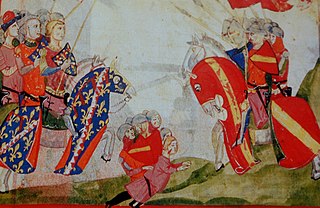
The Battle of Montecatini was fought in the Val di Nievole on 29 August 1315 between the Republic of Pisa, and the forces of both the Kingdom of Naples and the Republic of Florence. The Ghibelline army of Pisa, commanded by Uguccione della Faggiuola, won a victory over the Guelf armies of the Florentines and their allies. The Neapolitan forces, made up of 3200 cavalry and 30,000-60,000 infantry, were commanded by Philip I of Taranto, while the Pisan forces consisted of 3000 cavalry and 20,000 infantry.

The Republic of Siena was a historic state consisting of the city of Siena and its surrounding territory in Tuscany, central Italy. It existed for over 400 years, from 1125 to 1555. During its existence, it gradually expanded throughout southern Tuscany becoming one of the major economic powers of the Middle Ages, and one of the most important commercial, financial and artistic centers in Europe.

The Battle of Marciano occurred in the countryside of Marciano della Chiana, near Arezzo, Tuscany, on August 2, 1554, during the Italian War of 1551. The battle marked the defeat of the Republic of Siena in its war against the Duchy of Florence, and resulted in Siena losing its independence and being absorbed into the Duchy of Florence.
Giordano d'Agliano, sometimes Giordano Lancia, was an Italian nobleman and military commander who served as marshal of the Kingdom of Sicily under King Manfred (1258–1266). He played a prominent role in the wars of the Guelphs and Ghibellines in Tuscany.

Corso Donati was a politician and leader of the Black Guelph faction in 13th- and early 14th- century Florence.
The Battle of Altopascio was a battle fought in 1325 in Tuscany, between the Ghibelline forces of Lucca under Castruccio Castracani and those of Guelph Florence.

The battle of Colle di Val d'Elsa took place between 16 and 17 June 1269 at Colle di Val d'Elsa between the Ghibelline troops of Siena and the Guelph troops of Charles of Anjou and Florence, represented by fewer than 200 knights commanded by Neri de' Bardi.
An incomplete list of events in Italy in 1260:
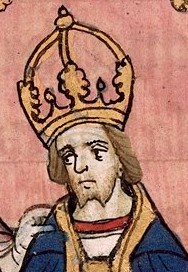
Henry VII, also known as Henry of Luxembourg, was Count of Luxembourg, King of Germany from 1308 and Holy Roman Emperor from 1312. He was the first emperor of the House of Luxembourg. During his brief career he reinvigorated the imperial cause in Italy, which was racked with the partisan struggles between the divided Guelph and Ghibelline factions, and inspired the praise of Dino Compagni and Dante Alighieri. He was the first emperor since the death of Frederick II in 1250, ending the Great Interregnum of the Holy Roman Empire; however, his premature death threatened to undo his life's work. His son, John of Bohemia, failed to be elected as his successor, and there was briefly another anti-king, Frederick the Fair, contesting the rule of Louis IV.
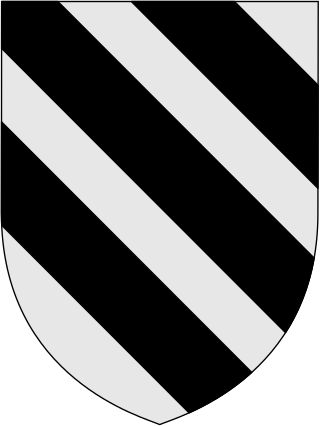
The Sacchetti family is an Italian noble family originating in Tuscany, now resident in Rome, whose earliest documented member Merlo lived during the late 10th and early 11th centuries. The name of the family is derived from one or more members known as Sacchetto. According to Ugolino di Vieri (1438–1516),"nobile Sacchetti genus est, moenia primus romanus sangius".

Guido Guerra V (1220-1272) was a politician from Florence, Italy. Aligned with the Guelph faction, Guerra had a prominent role in the political conflicts of mid-thirteenth century Tuscany. He was admired by Dante Alighieri, who granted him honor in the Divine Comedy, even though he placed Guerra in Hell among sinners of sodomy.

Bonconte I da Montefeltro was an Italian Ghibelline general. He led Ghibelline forces in several engagements until his battlefield death. Dante Alighieri featured Montefeltro as a character in the Divine Comedy.
Guglielmo or Guglielmino Ubertini was an Italian condottiero and bishop of Arezzo. He died in the Battle of Campaldino, leading a force of mainly Aretine Ghibellines fighting against a victorious Guelf army from Florence, Lucca, Siena, Pistoia and Prato. Dante Alighieri putatively fought with the victorious army.
